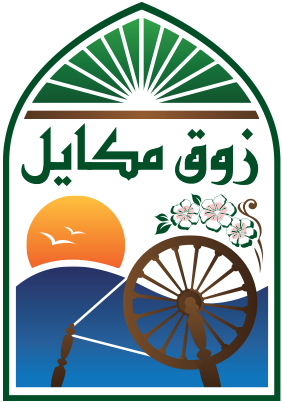
27 Jun At the crossroads of heaven and hell
Here they are back from Baalbeck, our French soldiers (L’Orient-Le Jour du 2 mars 2019). In this spring of 1939, there is still no indication that the mandate will be overturned by the most violent war of humanity. The French army of the Levant, to which they belong, lives there its last hours: it ended up falling asleep on its laurels after having quelled the Syrian revolts and is now content to do tourism in Lebanon.
On the menu of the day, an excursion to Nahr el-Kalb: in the series from which this photo is taken, our happy drilles discover with delight a practically intact valley. They wander along a millennial water collection system that supplies Beirut. They glean wild plants. Maraud in orchards that seem to belong to nobody, climb centuries-old oaks. They are young and full of testosterone and in the absence of a woman, it is with nature that they flirt, this still virgin nature cut to the measure of a small population, this gentle nature like a mother for generations of persecuted.
They then follow the course of the stelae, at the time a rugged path that climbs the side of the cliff: do they perceive the phrasing of history of which they are but a movement, do they realize the ephemerality of their imprint on this biblical land, do they feel the vibratos of the invaders who left inscriptions here and there, to celebrate their victory on this cliff reputed indomitable?
When they get all up there, they are caught in the sky, they discover a breathtaking panorama, it looks like an aerial view. To immortalize the moment, the photographer who has already demonstrated his talent in front of the columns of Jupiter creates a new composition: he places an imposing piece of the cliff on the right and over almost a third of the image. The white rocks beaten by an ancestral breeze hardly seem to tolerate our intruders or in any case cast a glance on them; a flip and there you are in the sea my little guys. The image is reminiscent of the scene where King Kong carries the beautiful in his hand, and if you look closely, it looks like an open hand and a thumbs up: the paradox of a welcoming and hostile country at the same time, because this hand held out as a sign of welcome can be closed from one second to the next, and without any mood, like a carnivorous plant.
The dust of the years
And here is the main course, if we dare to say: behind them and real object of the shot, extends a plain with a thousand shades of green bordered by the sea that we guess a good turquoise aloi. Here, agriculture reigns supreme and everything is organized around this activity: orchards as far as the eye can see, mainly populated with almond trees (a delicious marzipan is made there), punctuated by seasonal vegetation: lettuces , tomatoes, Greek horns, beans, cucurbits, eggplants, most of Lebanese cuisine summarized at a glance. And everywhere, modest old stone dwellings that can be counted on the fingers of both hands, buildings so old that some, like those in ruins at the mouth of the river, have been deserted since time immemorial and the names of their owners lost in the dust of the years.
In the distance, the coast which shelters a beautiful silty sandy beach starts at a point, before falling back towards the bay of Jounieh whose outline is visible in the mist. As we can see the small coastal road which will become in twenty years the horrible highway.
At the end of the 1930s, this coastal plain has not changed for centuries: in the foreground, Zouk Mosbeh is a small village of a few hundred souls and lives mainly from agriculture irrigated by the Dog River (Nahr el-Kalb) and the sources of al-Assal (honey) and Jeita. Further on is Zouk Mikael, named after a Turkmen chief from the time of the Mamelukes, a larger town which was at the time of the Moutassarifiya the seat of the Kesrouan caza. Zouk Mikael is known for its souk and its numerous convents and monasteries; its history is that of a continuous resistance to the invaders and the rebellion runs in the blood of its inhabitants, because after having resisted the Mamelukes and the Crusaders, they will attack the Egyptian pasha, Bachir Chehab II, the regime of double caimacamate and feudal power of the Khazen. It will therefore not surprise anyone that their distant descendants constitute a significant contingent of the revolt of October 17, 2019 …
Who could imagine the disaster that will follow in front of this panorama? We no longer know where to start: on the far left tip, Zouk’s power plant was added in 1956, forever disfiguring this landscape with its hideous installations and toxic chimneys … Camille Chamoun’s mandate n has not done wonders. In the center of the image, the agricultural land will disappear under residential buildings and seaside centers which will privatize access to the sea. And, unbearable sacrilege, the top of the cliff will be invaded by unscrupulous promoters and debited in quarry stones.
Plundered, butchered, sold to the highest bidder, Lebanon is a paradise destroyed by its own inhabitants with the active help of its neighbors and so many others who call themselves friends. Former meeting place of East and West, fallen link between two worlds and several civilizations, our drunk country stumbles now at the crossroads of heaven and hell, and each passing day takes us away from the first and brings us closer to the second.
Georges BOUSTANY
